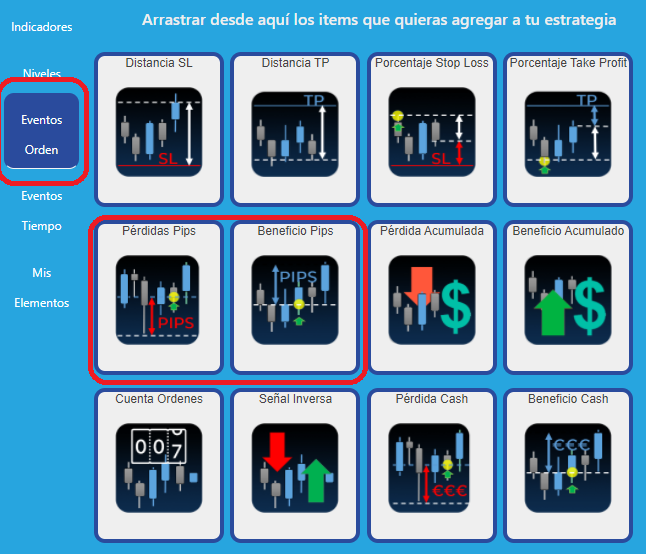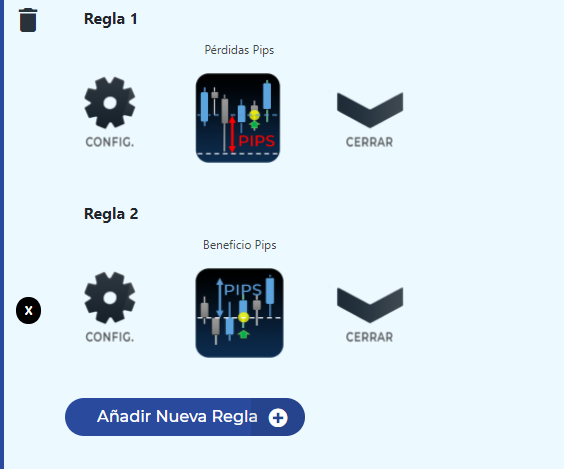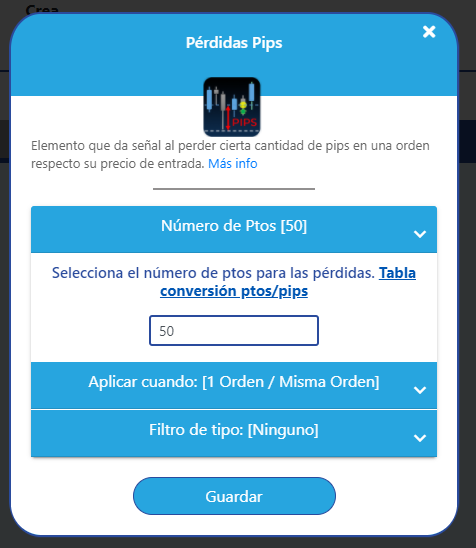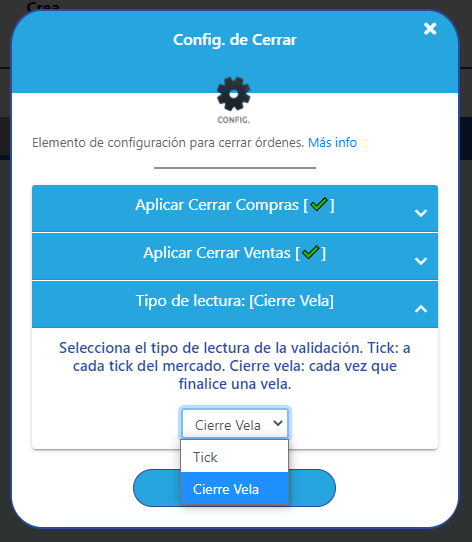In this article, we are going to explain how to define stop loss and take profit in tradeasy, the most used rules in trading.
To do so, we are going to use the elements, pips profit and pips losses, situated in the group elements of “order events”.

Even if all elements can be placed both, in entry and exit rules. In order to use it as take profit or stop loss, we might place them in the exit rule (since in the entry rules the interpretation would be “When achieving that profit or that loss, open an order”).
For that, we will configure each of the elements in an independent exit rule, as it is shown in the image:

Common mistake
It is important not to fall into the common mistake of joyning both rules (profit and loss) in a single rule. If you do not know what we are talking about, you must read this article Cómo funcionan las reglas y elementos de tradeasy.
Configuring the points
To configure the parameters, we might know beforehand the asset we want to refer to. That is so because each asset has different points (it is not the same 10 points in EURUSD, that 10 point in IBEX or 10 points in Bitcoin).
Inside the points parameter, we will have access to a table where the value of each point according to each asset is defined.

The table can be consulted here.
Other parameters
Besides the points, we have 2 other parameters to configure (both in the pips benefit and in the pips losses). Those parameters are only useful if we have thought about having more than one order open in the market at the same time.
- “Apply when”: That refers to if we want to give a signal when any order gets the profit/loss points (option 1 order/same order), or if we want to require that all the market orders have got, in a unitary way, the defined profit/loss points.
- “Filter”: This filter is in case we want to group orders. Withour filter we evaluate purchases and sales the same way. If we set the same type, we evaluate purchases for purchases signals and sales for sales sgnals. In the case of contrary type, it would be evaluate the points of the sales orders when we have a rule for purchases.
In any case, this is not important if you are starting; you can let those two parameter with the default parameters.
Evaluate at the tick or at the candle close
Finally, you must configure the lecture frequency of your rule. By default, all the rules are established with a lecture at the candle close, but you should know that it can be changed to the tick too, through the configuration bottom, the wheel that you will always see in the left of every rule.

What does it mean?
With that lecture configutation, we will be configuring how often the robot will be validating if your rule is being fulfilled.
If we do it at the candle close, the lecture would be done every time a candle is drawn in the graphic. Obviously, it will depend on the timeframe, this means, if we are working with 5 minutes candles, the rule will be evaluated every 5 minutes, meanwhile if the candle is a 1-hour candle, it would be done each hour.
However, if we do the lecture at the tick, then the rule validation would be done at every price movement. A tick is the change of the price of any asset. The tick lecture is much more fast and precise.
As a general rule, both, take profit and stop-loss are configured at the tick, even in tradeasy we give you the option to configure it at the candle close.
Happy trading!

